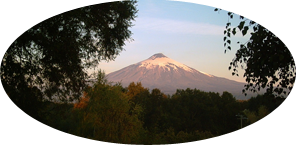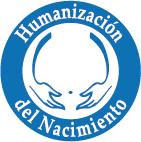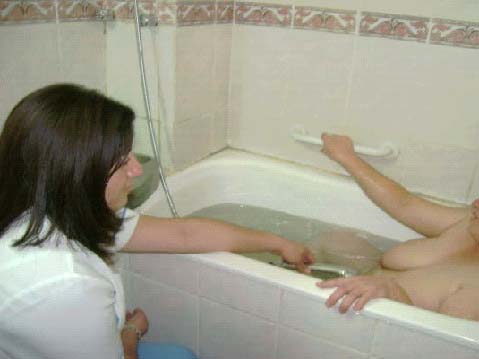 admin
admin
Parto en agua en Servicio Público
LA ALEGRÍA DE NACER.
Introducción:
El agua está unida a la vida, sin agua no es posible la vida. El agua tiene además un carácter tremendamente religioso y mágico, desde los inicios de la humanidad donde se ha usado para purificar y para sanar.
La vida sin duda empieza en el agua.
El agua nos ayuda a relajarnos y es un elemento que nos da placer. En el agua nuestros movimientos son suaves, no hay impactos, nuestro cuerpo está parcialmente liberado de la fuerza de gravedad y puede moverse en todas las direcciones sin caer.
A diferentes temperaturas tiene variados usos terapéuticos especialmente en articulaciones, ligamentos y relajación.
Canciones de Cuna – Nacimiento Humanizado
CANCIONES DE CUNA REDNACER.
Adaptado por rednacer.
Recostar, relajar, que un sueño va a llegar,
a dormir, a volar y en la calma descansar.
Quiero ver sonreír y brillar en la verdad,
cuando el sol, acordar, amanecer a un día lindo.
Alegre vas a despertar, despertar.
Brilla estrellita, linda en el cielo,
deja al bebé encontrar un sueño.
Linda estrellita alto en el cielo,
sopla su vuelo con un consuelo.
Brilla estrellita linda en el cielo,
trae un buen sueño a mi bebé.
Cántale alegre una linda canción,
de las hojitas del corazón.
Ya es hora de dormir esperando la voz de la mamá.
Un buen sueño para ti y alegría con papá.
8 horas va a entregar su cuerpito y descansar.
Después de un sueño bien sosegado,
despertar muy descansado(a).
Día asustado sal de encima del tejado,
deja a mi bebito(a) dormir sosegado,
Día asustado sal muy pronto del tejado,
porque mi bebé esta poco relajado
Día asustado sal de encima del tejado,
deja a mi bebito(a) dormir sosegado,
Día asustado no vuelvas más aquí,
porque mi bebé ya se acaba de dormir.
Cierra los ojitos oh bebé querido(a),
cierra los ojitos es hora de soñar:
Si es de noche y de sueño deberías descansar,
si el(la) bebé se duerme entero(a) estrellitas reirán.
Cierra los ojitos oh bebé querido(a),
cierra los ojitos es hora de soñar.
Si es de noche y de sueño deberías descansar,
si el(la) bebé se duerme entero(a) estrellitas reirán.
Duerme, duerme mi niño(a), papá y mamá están,
buscando un zapatito de flor en la arena del mar.
Duerme, duerme mi niño(a), papá y mamá están,
Mirando entre las nubes el rumbo de tu blanco soñar.
Duerme, duerme mi niño(a), papá y mamá están,
Tocando tus orejas de sol, tus alas, tu cantar.
Duerme, duerme mi niño(a), papá y mamá están,
Buscando un zapatito de flor en la arena del mar.
Ya es noche, ya es noche,
a dormir, a dormir,
Beso y un cariño, beso y un cariño,
descansar, descansar.
Ya es noche, ya es noche,
a dormir, a dormir.
Papá da un besito, mamá da un besito,
descansar, descansar.
Duerme mi niño(a) calma el corazón.
Deja los labios y oye esta canción.
Si siente un cariño para acercar el sueño
Duerme dulce niño(a) en los brazos del cariño.
Duerme mi niño(a) calma el corazón,
deja los labios y oye esta canción.
Si siente un cariño para acercar el sueño,
Duerme dulce niño(a) en los brazos del cariño.
Duerme mi niño(a) calma el corazón,
Deja los labios y oye esta canción,
Si siente un cariño para acercar el sueño,
Duerme dulce niño(a) en los brazos de mamá.
Nana, nené, que sueño te va a dar
Mamá viene cantando, mamá viene ya.
Nana, nené, que sueño te va a dar.
Mamá viene cantando, mamá viene ya.
Nana, nené, que sueño te va a dar
Mamá viene cantando, mamá viene ya.
Duerme mi ángel(ita) lindo(a),
en tu cuna sonriendo.
Uhu.
Duerme que hay noche con luna,
Nuestras manos son una
Uhu.
Duerme, sueña conmigo,
Entre soles y abrigo
Uhu.
Duerme que hay noche con luna.
Nuestras manos son una.
Uhu.
Sol, sol, sol, sol anaranjado
Deja este día con sus ojos arrugados
Sol, sol, sol, sol anaranjado
Deja este(a) niño(a) con un sueño liberado
Sol, sol, sol, sol anaranjado
Deja este día con sus ojos arrugados.
6 Años de Parto Humanizado
¡¡¡ 6 Años !!!
CELEBRAMOS 6 AÑOS EN EL NUEVO MODELO DE ASISTENCIA DE PARTO Y NACIMIENTO
Con una tremenda alegría queremos compartir esta fiesta de aniversario, e invitarlos a abrir puertas y ventanas porque “otro parto y nacimiento es posible”.
Lo que empezó tímidamente desde nuestra pequeña maternidad de Villarrica, en un hospital del servicio público chileno, en Junio del año 2004, se ha transformado en una experiencia contundente y de punta en Chile y en el continente.
NOTICIAS DEL CONGRESO INTERATLÁNTICO
CONCEPTO DE PARTO FISIOLÓGICO Y TENDENCIAS ACTUALES.
Jesús Sánz Sáchez
Definir en pocas palabras qué es un parto natural no es tarea fácil ni sencilla. El parto fisiológico, como tal ha existido desde la noche de los tiempos, y el ansia del ser humano por etiquetar todo lo que sucede a su alrededor le lleva a buscar definiciones para uno de los procesos fisiológicos más complejos de la mujer y, al mismo tiempo, que tiene una repercusión directa sobre la supervivencia de nuestra especie.
El parto natural no es algo que se haya inventado o creado en unos años, no es una moda, ni algo que pertenezca a una sociedad determinada. El parto natural ha sobrevivido a los continuos ataques de la ciencia y se presenta diariamente a lo largo de todo el mundo.
Documentos
- Documento pionero en Chile, de Michelle Sadler respecto a la Antropología del Parto y Nacimiento.
- Desde España, Acuario, el Dr. Enrique Lebrero nos envía un material trascendente, una mirada ecológica del parto y nacimiento.
- Documento completo de la OMS del año 1985, respecto a la tecnología apropiada para el parto.
- Documento completo de la OMS del año 1996, donde clasifica las prácticas obstétricas.
- Documento extraordinario del Ministerio de Salud de Perú, respecto al Parto Vertical.
Bibliografía Recomendada
BIBLIOGRAFÍA DE NIVEL BÁSICO.
DOCUMENTOS DE LAS OMS:
1.- Organización Mundial de la Salud: Declaración de Fortaleza.
Tecnología apropiada para el parto. Lancet 1985; 2:436-437.
2.- Organización Mundial de la Salud: Clasificación de las prácticas en el parto normal.http://www.who.int/treproductive-health/publications/MSM_96_24_Chapter 6. (texto completo en rednacer.cl, documentos)
TEXTOS:
1.- Boff,L: Saber cuidar. 9º Edición. Petropolis, Brasil: Editorial Voces.2003.
2.- Odent,M: El nacimiento renacido. Buenos Aires, Argentina:Editorial Errepar S.A.1984.
3.- Odent,M: El bebé es un mamífero.2ºEdición.Tenerife,España:Editorial Obstare.2007.
4.- Davis-Floyd,R:Perspectivas antropológicas del parto y nacimiento humano.Buenos Aires,Argentina;Editorial Creavida.2009.
DOCUMENTOS DE LAS OMS:
1.- Organización Mundial de la Salud: Declaración de Fortaleza.
Tecnología apropiada para el parto. Lancet 1985; 2:436-437.
2.- Organización Mundial de la Salud: Clasificación de las prácticas en el parto normal.http://www.who.int/treproductive-health/publications/MSM_96_24_Chapter 6. (texto completo en rednacer.cl, documentos)
TEXTOS:
1.- Boff,L: Saber cuidar. 9º edición. Petropolis, Brasil: Editorial Voces.2003.
2.- Odent,M: El nacimiento renacido. Buenos Aires, Argentina:Editorial.Errepar S.A.1984.
3.- Odent,M: El bebé es un mamífero.2ºEdición.Tenerife,España:Editorial Obstare.2007.
4.- Davis-Floyd,R:Perspectivas antropológicas del parto y nacimiento humano.Buenos Aires,Argentina;Editorial Creavida.2009.
5.- Odent,M: La cientificación del amor.Buenos Aires,Argentina;Editorial Creavida.2001.
6.- Fernández del Castillo,I: La revolución del nacimiento. Madrid, España: Editorial Epaf S.A.1994.
7.- Olza,I; Lebrero,E: ¿Nacer por cesárea? Barcelona,España: Editorial Granica S.A. 2005.
8.- Muñoz,H;Kaempffer,A;Castro,R;Valenzuela,S: Nacer en el siglo XXI de vuelta a lo Humano. Humanización del Proceso Reproductivo Mujer-Niño-Familia; Santiago, Chile 2001,Ministerio de Salud.Universidad de Chile.
ARTÍCULOS:
1.- Anderson,GC et als. Early skin-to-skin contact for mothers and their healthy newborn infants (Cochrane Review). From Cochrane Library, Issue 3, 2004.
2.- Carroli,G ets als. Episiotomy for vaginal birth (Cochrane Review). From Cochrane Library, Issue 2, 2005.
3.- Kimelman,M. González L. El proceso de vinculación, una tarea del equipo obstétrico.Foro de Ginecologia Vol.6,Nº 2,2003.
4.- Cluett E,Burns E. Inmersion in water in Pregnancy, Labour and Birth (Cochrane Review). The Cochrane Library 2009; Issue 2.Oxford: Update Software
5.- Hodnet,ED et als. Continuous support for women during childbirth (Cochrane Review). From The Cochrane Librar, Issue 2,2005.
6.- Gupta,JK et als. Position in the second stage of labour for women without epidural anaesthesia (Cochrane Review). From The Cochrane Library, Issue2, 2005.
7.- Treude,C et als Usere Erfahrungen mit Vertikalen Gebärhaltungen. Die Hebamme 2004 ;18 :36-37.
8.- Harder, I. Boding-Förderung im Alltag. Die Hebamme 2004;17:136.
9.- E Vain,N et als. Oropharyngeal and nasopharyngeal suctioning of meconium-stained neonates before delivery of their shoulders :multicentre, randomised controlled trial. Lancet 2004;364; 597-602.
10.- Kennell,J et als. Starting the process of the mother-infant bonding. Acta Paediatr. 2005 Jun; 94 (6):775-7.
11.- Pedersen CA. Biological aspects of social bonding and the roots of human violence. Ann N Y Acad Sci. 2004 Dec;1036:106-27.
12.- Zan,F. (Importance of attachment in the development of psychism). Vertex. 2004 Jun-Aug;15(56):121-9.
13.- Salinas,H.Factores predictors de cesárea.Rev Chil Obstet Ginecol.2004;69(5):357-360.
14.- Sosa,R et als.The effect of a supportive compagnion on perinatal problems; length of labor and mother-infant-interaction. The New England Journal of Medicine1984.
Nuestros Resulatdos
PARTO VERTICAL:
 Comenzamos los cambios en la asistencia de parto en posición vertical, el segundo semestre de 2004, con la introducción de una silla de parto descrita en silla de partos.
Comenzamos los cambios en la asistencia de parto en posición vertical, el segundo semestre de 2004, con la introducción de una silla de parto descrita en silla de partos.
Lo práctico, el arte
Mujer, Escogida, Amada y Amante = Gestante.
PREPARTOS
LAS PERSONAS
 La persona que asiste debe desarrollar no solamente las áreas técnicas, sino fundamentalmente la ternura, el afecto, la acogida, la mirada, el silencio, la tolerancia y lo más importante, saber esperar, la paciencia.
La persona que asiste debe desarrollar no solamente las áreas técnicas, sino fundamentalmente la ternura, el afecto, la acogida, la mirada, el silencio, la tolerancia y lo más importante, saber esperar, la paciencia.

